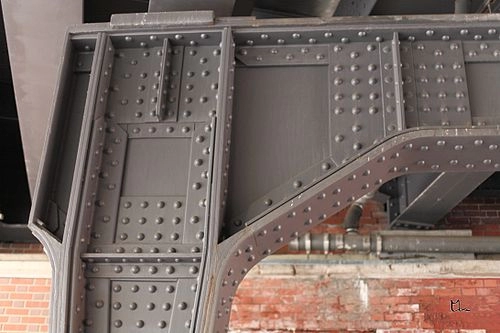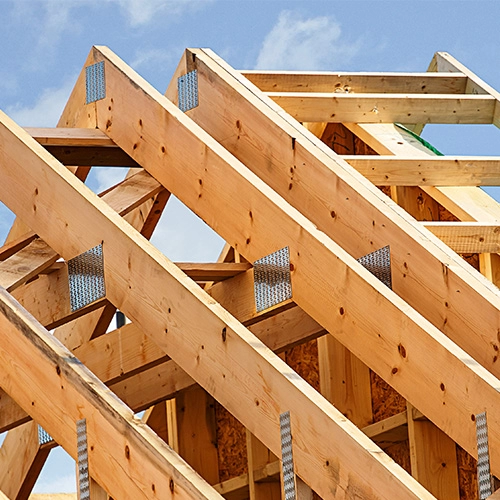Discover the meaning of rivets with a clear guide on types, uses, and installation for durable, permanent fasteners in construction and DIY projects.
The Core Definition What Are Rivets and How Do They Work
Rivets are permanent fasteners used to join two or more pieces of material, usually metal or plastic, by passing a metal pin through pre-drilled holes and then deforming the tail end to hold everything tightly together. Unlike screws or bolts that rely on threading and can be removed, rivets create a lasting bond that keeps parts securely fastened under stress or vibration.
At their core, rivets work by inserting a smooth shaft through aligned holes in the materials being joined. Then, the exposed end of the rivet is deformed, often by hammering or using a special tool, creating a “head” that clamps the materials together tightly. This deformation makes rivets ideal for strong, permanent joints that don’t loosen over time.
Rivet Basics A Simple Yet Ingenious Design
Despite their simplicity, rivets represent an ingenious fastening solution that has stood the test of time. They don’t require nuts or threads, so they can join components where only one side is accessible — something bolts and screws can’t always do. This makes rivets especially useful in aerospace, construction, and automotive industries.
Some key points about rivets:
- They provide strong shear strength, ideal for holding materials side-by-side.
- Installation is usually quick, especially with modern pneumatic or hand tools.
- Rivets are cost-effective and come in many sizes and materials to suit different jobs.
Rivets vs Alternatives Why Choose Rivets Over Bolts or Screws
When choosing a permanent fastener, people often wonder whether to use rivets, bolts, or screws. Here’s why rivets can be the better choice:
- Permanent Bond: Rivets create a connection that won’t loosen or back out, unlike screws that can vibrate loose.
- Single-Sided Installation: With rivets, you only need access to one side of the assembly, unlike bolts that require tools on both sides.
- Weight Efficiency: Rivets are often lighter than bolts, which is crucial in aviation and automotive design.
- Cost and Speed: Riveting can be faster on an assembly line, lowering labor costs.
In many cases, especially where strength, permanence, and speed matter, rivets offer a practical and reliable solution over screws or bolts.
A Deep Dive into Rivet Types Matching Meaning to Application

When it comes to rivets, understanding the different types helps you pick the right one for your project. Each type has a specific meaning and application, so let’s break down the most common rivets you’ll encounter.
Solid Rivets The Timeless Workhorses
Solid rivets are the classic choice, known for their strength and reliability. Made from a single piece of metal, they require hammering or pressing to fasten. You’ll find them in aircraft, bridges, and heavy machinery where a durable, permanent bond is crucial. These rivets are a top pick when strength and a lasting hold are non-negotiable.
Blind Pop Rivets DIY Friendly and Versatile
If you’re working in tight spaces or don’t have access to both sides of the materials, blind pop rivets are your best bet. They’re lightweight, easy to install with a riveting tool, and perfect for quick fixes or home projects. Whether fixing gutters or assembling metal sheets, these rivets make a solid connection without complicated steps.
Specialty Variants Tubular Split and Structural Rivets
Beyond the basics, specialty rivets cater to unique needs:
- Tubular Rivets have a hollow shaft, making them easier to install with less force, ideal for softer materials like leather or plastics.
- Split Rivets spread out inside the hole for a secure grip, often used in decorative or light-duty applications.
- Structural Rivets are heavy-duty and built for load-bearing construction work, providing extra strength where safety is top priority.
Knowing these types helps you match the rivet meaning to the job, ensuring you get the right fastener for every project.
Real World Applications Where Rivets Make a Lasting Impact

Industrial and Construction Uses
Rivets play a huge role in industrial and construction projects across the U.S. From building bridges and skyscrapers to assembling airplanes and trains, rivets provide the kind of permanent fastening that bolts or screws just can’t match. They hold heavy steel plates together, withstand vibrations, and resist loosening over time—making them ideal for tough conditions. In construction, using rivets means strength, reliability, and safety, especially where welding isn’t the best option.
Everyday and Consumer Scenarios
You’ll also find rivets in everyday items around the house without even realizing it. Think about denim jeans—the classic copper rivets at stress points make the fabric tougher and longer-lasting. Rivets are common in handbags, leather goods, and even in appliance assembly. For DIYers and hobbyists, blind rivets (or pop rivets) are a popular choice because they’re simple to install and hold things together securely without requiring access to both sides.
Beyond the Literal The Metaphorical Riveting Meaning
Rivets have made their way into everyday language too. When something is “riveting,” it means it grabs your attention, just like the fastener that holds everything firmly in place. This metaphor reflects how rivets work—bringing parts and people together in a way that’s strong and reliable, keeping everything connected and solid. It’s a simple word with a powerful meaning inside and out.
Installation Essentials How to Use Rivets Like a Pro
Using rivets correctly makes all the difference in a strong, lasting hold. Whether you’re working with solid rivets or blind rivets, having the right tools and knowing the basic techniques will save you time and frustration.
Tools and Techniques for Success
- Riveting tool: For solid rivets, you’ll need a hammer or rivet gun; for blind rivets, a hand or pneumatic rivet gun is best.
- Drill and bits: You’ll need to drill perfectly sized holes before setting rivets.
- Measuring and marking: Use a ruler and marker to align holes properly.
- Safety gear: Gloves and eye protection keep you safe from metal shards.
Steps to install rivets like a pro:
- Drill a hole slightly larger than the rivet’s shaft.
- Insert the rivet through the materials.
- Use the riveting tool to expand or deform the rivet, locking it tight.
- Check for a snug fit without any gaps or loose parts.
Common Mistakes and Troubleshooting
- Incorrect hole size: Too big, and the rivet won’t hold; too small, and it won’t fit.
- Poor alignment: Misaligned holes can weaken the joint.
- Not enough pressure: Under-setting the rivet leaves a loose connection.
- Too much pressure: Over-setting can damage materials or the rivet itself.
- Using the wrong rivet type: Match the rivet to your material and application for best results.
If a rivet doesn’t grip right, remove it carefully and try again with the right tools and measurements. Getting this part right ensures your project stays solid for years.
The Future of Rivets Innovation and Sustainability
Rivets are here to stay, but like many tools, they’re evolving. Innovation is making rivets stronger, lighter, and easier to install. New materials, like advanced alloys and corrosion-resistant coatings, help rivets last longer—especially important in construction and industrial jobs across the U.S. where weather and wear take a toll.
Sustainability is also shaping rivet design. Manufacturers are focusing on eco-friendly materials and production methods to reduce waste and energy use. Recyclable rivets and tools that use less power help meet growing demands for greener building practices.
Looking ahead, expect more automated rivet installation tools to speed up work while keeping quality tight. Smart rivets with sensors could even monitor structural health, alerting crews to any problems early on.
Bottom line, rivets are blending tradition with tech and eco-consciousness—making them a practical, sustainable choice for today’s construction, manufacturing, and everyday projects.